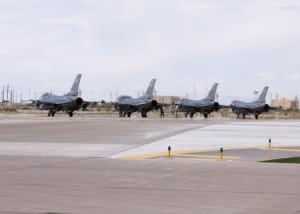
For the first time, the Joint Staff’s coalition capability assessment known as Bold Quest has aligned with the Army’s Network Integration Evaluation (NIE) in an event known as NIE/BQ 14.2, sharing resources and saving money while using White Sands Missile Range N.M., Holloman AFB, N.M., and Ft. Bliss, Texas. At the same time, the events offered a joint training opportunity, as there were NIE soldiers on the ground, a Marine battalion and coalition force personnel and aircraft from different units…













